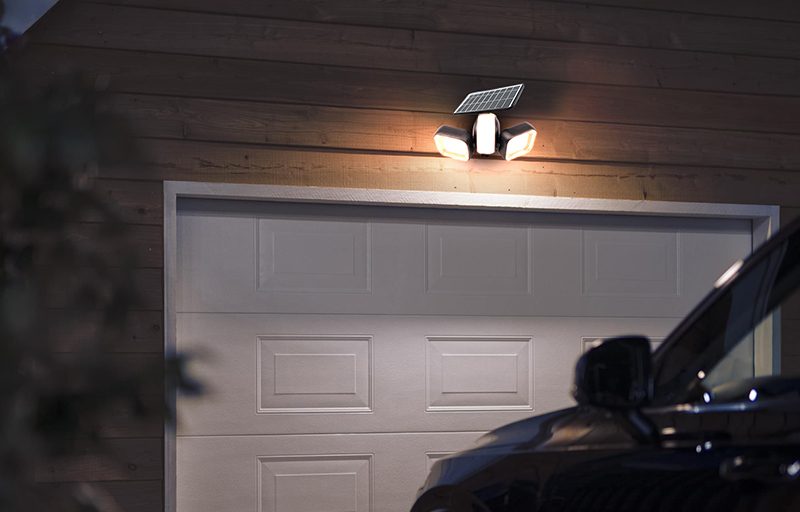The use of solar-powered outdoor path lighting with motion sensors is a smart and cost-effective way of lighting exterior areas. These lighting systems use the sun’s energy to illuminate at night, while the motion sensors ensure that they are only switched on when necessary. They are perfect for people and organisations looking to improve safety and increase visibility. In this article we take a look at the advantages, features and installation procedures of solar outdoor path lighting with motion sensors.
advantages of motion-activated solar outdoor pathway lighting
Energy Efficiency: Solar lighting systems use solar energy to generate electricity, making them a sustainable and affordable option for lighting outdoor areas. These lights only turn on when necessary thanks to the use of motion sensors, which further lowers energy usage and increases the lifespan of the solar panels and batteries.
Improved Security: Motion-activated lighting alerts you and your neighbours to unusual activity on your property, which serves as a deterrent to potential attackers. Also, by lowering the possibility of tripping or stumbling in the dark, well-lit walkways offer a safer atmosphere for you and your visitors.
Ease of Installation: Solar outdoor pathway lighting systems do not require any wiring, making them an easy and handy alternative for homeowners. You can rapidly install these lights and start taking advantage of their advantages with the fewest tools and work.
Minimal Maintenance: Solar-powered lights require little maintenance because they use renewable energy. Most systems include robust solar panels and long-lasting LED bulbs, guaranteeing that your lights will continue to operate well for many years.

The Most Important Qualities of Solar Outdoor Pathway Lighting with Motion Sensors
Efficiency of Solar Panels: The effectiveness of your lighting system is directly impacted by the efficiency of your solar panels.
To guarantee that your lights receive enough energy during the day, look for panels with a high conversion rate.
Longer periods of lighting are possible with larger batteries, especially during times when sunshine is scarce.
Choose a lighting system with a battery that has the capacity to store enough energy to run your lights all night long.
Motion Sensor Range: How far away movement can be detected depends on the motion sensor’s range.
Whether you want to illuminate a narrow walkway or a broader outdoor space, pick a lighting system with the right range for your needs.
Brightness and Color Temperature: While choosing your solar outdoor pathway lighting, take into account the brightness and colour temperature of the LED bulbs.
Cooler colors offer a more contemporary appearance, while warmer colors create a pleasant ambiance. It is a good idea to have a backup plan in case something goes wrong.
Weather Resistance: Because your chosen lighting system will be exposed to the elements year-round, be sure it is made of sturdy materials and is weather-resistant.
Setting Up Your Motion-Activated Solar Outdoor Pathway Lights
Decide on a location: Choose a position for your solar lights that gets plenty of daytime light.
The solar panel should be placed to get the most light exposure and away from any potential obstacles, like trees or structures.
Put the Lights Together: Your solar outdoor pathway lights must be assembled according to the manufacturer’s instructions.
The solar panel, light fixture, and motion sensor are normally fastened to the mounting stake or pole in order to accomplish this.
Put up the Lighting: Place the lights safely along the path of your choice, making sure the motion sensor faces the region you want to keep an eye on. Just drive the stake into the ground if using one.
You might need to dig a hole and pour concrete to hold the pole in place if your lights are pole-mounted.
Light Checking: Test your lights after a full day of letting the solar panel charge. Once charged, step in front of the motion sensor to activate it.
Verify that the lights turn on as you expect them to and, if required, change the sensitivity levels.
Periodic Maintenance: Despite the cheap maintenance of solar outdoor motion sensor pathway lighting, it is still necessary to routinely clean the solar panels and swap out the batteries as necessary.
Your lighting system’s performance will be at its best, and its lifespan will be increased.

Tips for Making the Most of Your Motion-Activated Solar Outdoor Pathway Lighting
Optimize Sun Exposure: Routinely prune any vegetation that can prevent sunlight from reaching the solar panel.
Your lighting system’s efficiency will be maintained as a result.
Configure the motion sensor: To fit your unique requirements, adjust the motion sensor’s sensitivity and duration settings.
This will lessen the likelihood of erroneous activations and preserve battery life.
Strategic Installation: Put your solar outdoor pathway lighting where it will have the biggest effects on safety and visibility.
Provide lighting around entrances, stairs, or other potential trip hazards.
Think about Extra Features: Some solar pathway lighting systems for outdoor use have extra features like timers, remote controls, or programmable light settings.
Your lighting system may benefit from these choices’ increased versatility and convenience.
Invest in Quality: Although there are affordable solutions, buying a high-quality solar outdoor pathway lighting system can wind up saving you money over time.
High-quality systems often have stronger components, more effective solar panels, and longer battery lives.
Conclusion
A practical, green, and affordable option for lighting your outside areas is solar outdoor pathway lighting with motion sensors.
If you are interested in learning more about solar lights and all the amazing benefits they offer, our website is the perfect starting point.
Here you’ll find a wealth of information, from the latest technology used in solar lights, to the different types of solar lighting available, to tips and tricks for making the most of your solar lights.
With our detailed guides, reviews and other resources, you’ll be able to make informed decisions about your outdoor lighting needs.
We also keep you up to date with the latest developments and trends in solar lighting with regular updates on innovations that are coming to market.
Table of Contents